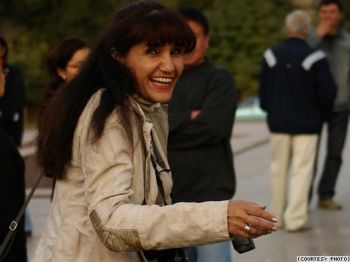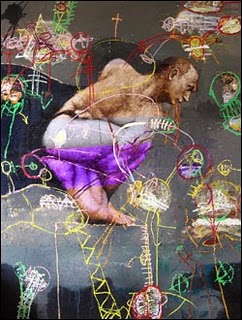Uzbekistan: Photographer Charged with Defamation
Uzbek photographer Umida Ahmedova was charged with defamation in Uzbekistan on 16 December 2009, related to the 2007 publication of a book of photographs and a documentary film commissioned by the Swiss Embassy in Tashkent.
 The book, Customs of Men and Women, contains more than 100 images of local people and customs. The Tashkent Prosecutor’s Office has charged Ahmedova, left, on the basis that this work constitutes “an insult and slander of the Uzbek people” and portrays local people as backward.
The book, Customs of Men and Women, contains more than 100 images of local people and customs. The Tashkent Prosecutor’s Office has charged Ahmedova, left, on the basis that this work constitutes “an insult and slander of the Uzbek people” and portrays local people as backward.
The Uzbek Government stipulates that any publications or media materials produced by NGOs or international organisations must be approved by state officials, including the Cabinet of Ministers.
Specific topics such as poverty, gender equality, feminism, domestic violence and human rights may now be construed as “hostile” to national culture and tradition.
Criminal defamation in Uzbekistan carries a sentence of six months in prison or three years of hard labour, and Ahmedova is unable to leave the country before her trial.
Burma: Documentary Videographers Jailed  Another two videographers working for Democratic Voice of Burma, a Norway-based television channel, have been sentenced to long prison terms in Burma.
Another two videographers working for Democratic Voice of Burma, a Norway-based television channel, have been sentenced to long prison terms in Burma.
The videographers became famous internationally for the film Burma VJ which documented the 2007 Saffron Revolution when Buddhist monks led widespread protests against the military regime. The film has been shortlisted for the 2010 Academy Awards and has already won an award at the Sundance Film Festival.
According to the Burma Media Association, videographer Ngwe Soe Lin was handed a 13-year prison sentence by a secret court held inside Rangoon’s Insein prison on 27 January 2010. He was convicted under the Burmese Electronics Act and the Immigration Emergency Provisions Act.
On 30 December 2009, the Democratic Voice of Burma reported that another videographer, Hla Hla Win, had been sentenced to 27 years in prison. She was also convicted under the Electronics Act. The channel estimates that 14 of its reporters and videographers are now in prison.
 Denmark: Controversial Cartoonist Attacked at Home
Denmark: Controversial Cartoonist Attacked at Home
Kurt Westergaard, the cartoonist whose images of the prophet Muhammed with a bomb in his turban created an international outcry in 2006, was attacked in his Aarhus home on 1 January 2010. According to Danish newspaper Aften Posten, a 28-year-old Somali man, who was already under surveillance by security services, smashed his way into the 75-year-old cartoonist’s house, brandishing an axe and a knife. Westergaard, who was with his five-year-old granddaughter, locked himself in his specially fortified bathroom and called the police.
The attacker left the house after failing to smash down the door and was arrested at the scene. He appeared in court on 2 January 2010, charged with the attempted murders of Westergaard and a policeman.
Westergaard lives under close police protection and only emerged from hiding last year, after his cartoons sparked protests at Danish embassies worldwide and threats against his life.
Westergaard’s cartoons have also been rejected from an auction being held to raise relief funds for Haiti. According to the Copenhagen Post, television programme Go’morgen Danmark organised the auction and asked celebrities to donate personal items. However, following the attack on Westergaard, the auctioneers Lauritz.com refused to accept his work, stating reasons of security.
Ukraine: Public Morality Commission Censors Artists A group of artists, writers and human rights activists joined together in Ukraine on 15 January to protest the continued censorship of art by the National Expert Commission for the Protection of Public Morality. According to the Kharkiv Human Rights Protection Group, the artists and writers are planning to launch new projects that aim to tackle the Commission’s stranglehold over what can be classed as art.
A group of artists, writers and human rights activists joined together in Ukraine on 15 January to protest the continued censorship of art by the National Expert Commission for the Protection of Public Morality. According to the Kharkiv Human Rights Protection Group, the artists and writers are planning to launch new projects that aim to tackle the Commission’s stranglehold over what can be classed as art.
The artist Oleksandr Roitburd states: “I lived for 30 years in a country called the Soviet Union, and now I feel that this commission is bringing it with them. I really would like to laugh at them, but in fact it’s not funny. It’s foul and frightening.”
Click here to read more cases from ARTICLE 19’s January 2010 Artist Alert


